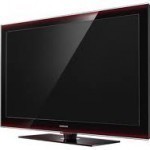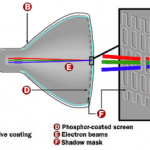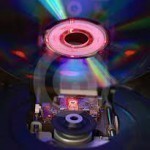To configure your RCA DirectTV remote, you need to have the receiver's brand and model number. This can either be found within the instruction manual or it can be found on the back or the bottom of the box. Write this down so you don't have to keep going back to the box to get the digits. Put the box back where you want it and plug it in so that it can begin powering up. Now that you've got the brand of the receiver, go into the instruction manual Read More
ATSC Tuner
An ATSC tuner is a device that is used in the reception of digital TV signals (DTV), including HDTV (High Definition TV) signals. An ATSC tuner is specifically used by broadcast television stations in North America to send their over the air TV signals to homes that have a television with either an internal ATSC tuner or an external ATSC tuner in the form of a set top box. Although the term "ATSC tuner" is used by most commercial products, scientifically, it is actually referred to as an "ATSC receiver". Read More
How a Flat Screen TV Works

There are two types of flat-screen televisions. These are LCD (Liquid Crystal Display) TVs and PDPs (Plasma Display Panels). LCD TVs and plasma TVs both work differently from the traditional Cathode Ray Tube (CRT) TVs. Unlike CRT TVs, flat-screen TVs do not use an electron beam running back and forth behind the screen to produce a picture. An LCD TV and a plasma TV use the same technology of switching millions of tiny picture elements called pixels on and off to produce a moving picture. Each of these pixels is Read More
Who Invented the Television?
Who invented the television is a hotly debated question. The invention of the television grew out of the invention of the radio. Since you can easily send sound through the air waves many inventors starting thinking of the possibility of not only sound being sent through the airwaves, but also images. On December 2, 1922, Edwin Berlin who is the patent holder of numerous technologies including the transmission of photographs or images by wire, by radar device and by fiber optics demonstrated in Sorbonne France a mechanical device that is Read More
How Television Works

Most people spend hours each day watching programming on their TV set, however, many people might wonder how in fact television works. There are many parts to this process and many technologies that are involved. Following are the most important processes and technologies involved in making television work. Main Elements of the TV Process There are many major elements that are required in order for TV to work. They usually include a video source, an audio source, a transmitter, a receiver, a display device, and a sound device. Video Source Read More
How to Watch TV Online
There are a lot of alternatives to cable television today with the advent of the Internet, and not all of them cost money or require you to register for viewing. As with any broadcast service, channel selection, picture quality, and the ability to pick and choose specific shows varies with what service you connect to. Delivery Options There are a few different methods to receive free online TV service: In-line Browser Supported Video In-line browser supported video requires only a browser to play the content, as long as you have Read More
How Color Television Works
If you are wondering how a color television works, you should first understand how a standard TV set works and how the brain perceives TV signals. How a TV works For the most part a TV station broadcasts a television program by converting a television program (sound and video) into a radio frequency which is then transmitted to a broad area. A TV set receives these signals and then turns these signals into sound and video by converting the radio frequency into an image. The image is created by small Read More
CSS (Content Scrambling System)

The Content Scrambling System, or CSS, is a Digital Rights Management, or DRM, encryption system that encrypts data on commercially-available DVDs and prevents users from copying the disc’s data to a computer file or another disc. The Content Scrambling System is also used to require all media player manufacturers to produce devices that are compatible with the Content Scrambling System because the encrypted discs will not stream to a non-compatible device. How A Content Scrambling System Works The Content Scrambling System depends on three keys and a process known Read More
3DTV
3D TV is, as the name suggests, a television that can play 3D picture. For the most part, 3D TV are TVs that work in sync with LCD shutter glasses that tell the glasses which eye should be exposed to the image on the screen. While 3D TV has been slow to take off, with more movies beginning to go 3D, there has been an increased demand for 3D TVs and therefore, many of the large television companies — Toshiba, Sony, Panasonic, to name a few — have all expressed Read More
Aspect Ratio
Aspect Ratio is the ratio of a picture's width to its height. NTSC television uses a 4:3 aspect ratio. HDTV and SDTV feature a 16:9 aspect ratio. Movie theaters typically use an aspect ration of 1.85:1 or 2.35:1. Converting a movie to television requires either pan and scan or letterboxing. Pan and scan is a process where technicians remove portions of the left or right side of the video to convert the aspect ratio. Letterboxing is displaying the full picture in the center of the screen, with black bars above Read More


Share on: